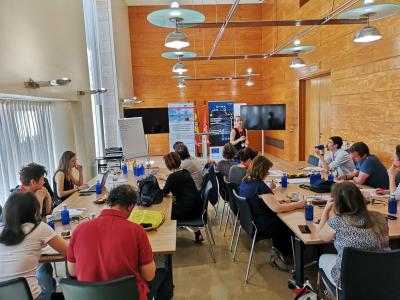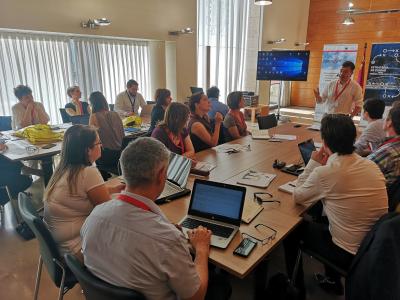
Murcia City Hall, ≈450k inhabitants, south-east of Spain, as partner in the Urbact Innovator Transfer Network, is using bottom-up innovation in the public administration originating from Civil Servants, operating under the working concept of Capacity Building and Empowerment of Municipal Employees through Innovative Idea and Solution Generation.
The adaptation of the Turin Model to the local reality of Murcia relied heavily on the prominent political support and backing, on the Urbact method including Urban Local Group (ULG) creation, which in our case was done using Civil Servants, specifically the Heads of Departments, to ensure involvement and internal follow through.
The Minimal Viable Product (MVP), “That version of a new product which allows a team to collect the maximum amount of validated learnings about customers with the minimum effort”, was defined clearly before starting the process and for our implementation defines as follows, “the process to enable and facilitate, even incentivise, in-house innovation and improvement through the LEI motto” LEI standing for “Logistics, Efficiency and Integration” which includes work-flows, optimising resources, communication (problems), etc.
A first call for proposals was launched internally in the ULG, department heads being free to share and gather input from their respective areas if they so considered, and using a template we had created for the specific purpose of structuring and homogenizing the format of proposals, facilitating the internal assessment and comparison. This first call had a response of 17 actionable proposals. Within the ULG there was an intense debate regarding these proposals to decide which action to implement or which problem to tackle. At this point it is important to say that the remainder of the input was not discarded, but now forms a shortlist of possibilities to work with in the future. Predominant factors for the deliberation included; Cost, Time-span, Complexity, Consensus (and motivation).

The proposal chosen for implementation was that of including primary schools (dependant on the municipal government regarding facilities, etc.) in the routes that pick up paper waste. The municipal waste collection system includes a network of containers of various types, e.g. plastics, organic, glass, regular waste, and the routes for emptying these containers. Schools had to dispose of their own paper waste, and one of the seventeen submitted proposals was the recollection of paper waste directly by the municipal service in charge of regular pick-up, by adding the schools to the route of the trucks. This (low-cost) option would increase municipal efficiency as well as save money as it would be included in regular, already existing, routes, and have the added value of a regular pick-up, unburdening the schools of this task, and even if only being a (very) small enterprise, save them time and money.

We launched a probe in two neighbourhoods of the city centre, to see what outcomes this new innovative approach would bring. The… success?? Was short lived as the probe started in January 2020 and all schools were closed on the twelfth of March of the same year. Which does not affect the pilot itself, seeing, as mentioned before, the pilot action itself, the MVP itself, was the process of gathering the proposals, the format and tools used, the evaluation and processing, the selection of viable projects and the selection of one project to be implemented. This process, and therefore the Minimal Viable Product, having been tested, was considered a success. And even though we will be tweaking some aspects, and dive into the workings of certain procedures, especially regarding the upscaling and capacity to manage the second MVP, the launch of which is imminent, our approach has proven to be effective and efficient, serving as the building blocks for the next step.
